Chapter 7: Late Antique Art
5.0(1)
5.0(1)
Card Sorting
1/47
Study Analytics
Name | Mastery | Learn | Test | Matching | Spaced |
|---|
No study sessions yet.
48 Terms
1
New cards
Jesus Christ
He founded Christianity in the first century C.E.
2
New cards
Church Peace
began with Constantine's victory at the Milvian Bridge in 312 C.E.
3
New cards
Catacomb
an underground passageway used for burial
4
New cards
The Annunciation
The Angel Gabriel announces to Mary that she will be the virgin mother of Jesus.
5
New cards
The Visitation
Mary visits her cousin Elizabeth to tell her the news that she is pregnant with Jesus.
6
New cards
Christmas or the Nativity
The birth of Jesus in Bethlehem.
7
New cards
Adoration of the Magi
Traditionally, three kings, who are also astrologers, are attracted by a star that shines over Jesus’s manger.
8
New cards
Massacre of the Innocents
After Jesus is born, King Herod issues an order to execute all male infants in the hope of killing him.
9
New cards
Baptism of Jesus
John the Baptist, Jesus’s cousin, baptizes him in the Jordan River.
10
New cards
Calling of the Apostles
Jesus gathers his followers, including Saint Matthew and Saint Peter, as his ministry moves forward.
11
New cards
Miracles
To prove his divinity, Jesus performs a number of miracles, like multiplying loaves and fishes, resurrecting the deceased Lazarus, and changing water into wine at the Wedding at Cana.
12
New cards
Giving the Keys
Sensing his own death, Jesus gives Saint Peter the keys to the kingdom of heaven, in effect installing him as the leader when he is gone, and therefore the first pope.
13
New cards
Transfiguration
Jesus transfigures himself into God before the eyes of his apostles; this is the high point of his ministry.
14
New cards
Palm Sunday
Jesus enters Jerusalem in triumph, greeted by throngs with palm branches.
15
New cards
Last Supper
Before Jesus is arrested, he has a final meal with his disciples in which he institutes the Eucharist—that is, his body and blood in the form of bread and wine; at this meal he reveals that he knows that one of his apostles, Judas, has betrayed him for 30 pieces of silver.
16
New cards
Crucifixion
After a brief series of trials, Jesus is sentenced to death for sedition.
17
New cards
Deposition
The taking down of **Jesus’s** dead body from the cross
18
New cards
Lamentation
Jesus being mourned by his family and friends after his crucifixion and descent from the Cross.
19
New cards
Entombment
The burial of Jesus
20
New cards
Pieta
The lamentation of Jesus’s death
21
New cards
Resurrection
On Easter Sunday, three days later, Jesus rises from the dead.
22
New cards
New Testament
Also important are four author portraits of the Evangelists, who are the writers of the principal books, or gospels, of the \____.
23
New cards
Gospels
the first four books of the New Testament that chronicle the life of Jesus
24
New cards
Catacomb paintings
show a sensitivity toward artistic programs rather than random images.
25
New cards
Lunette
a crescent-shaped space, sometimes over a doorway, that contains sculpture or painting
26
New cards
Orant figure
a figure with its hands raised in prayer
27
New cards
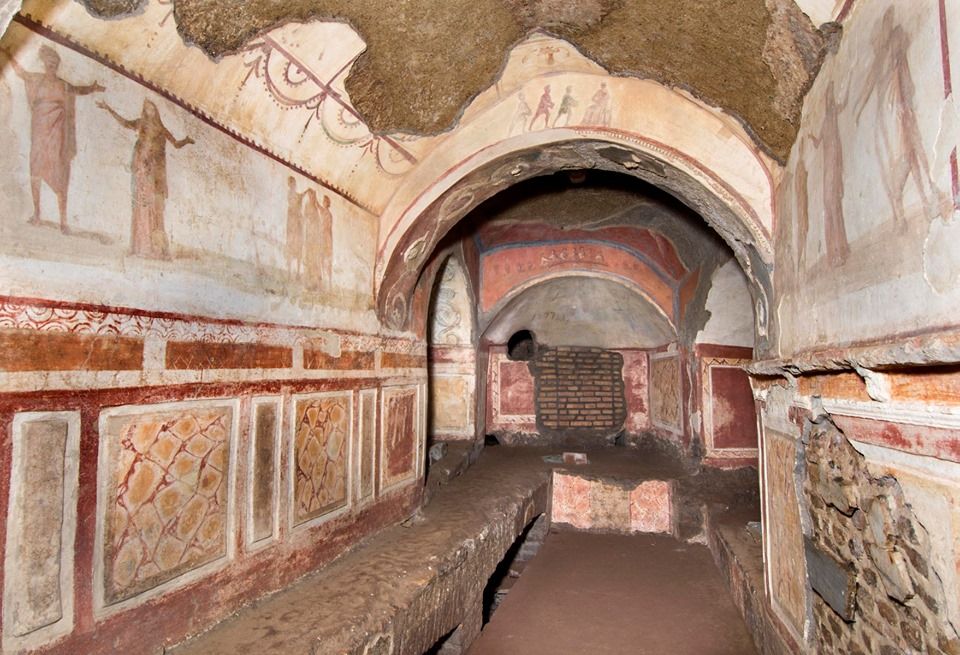
Greek Chapel
* Named for two Greek inscriptions painted on the right niche.
* Three niches for sarcophagi.
* Three niches for sarcophagi.
28
New cards
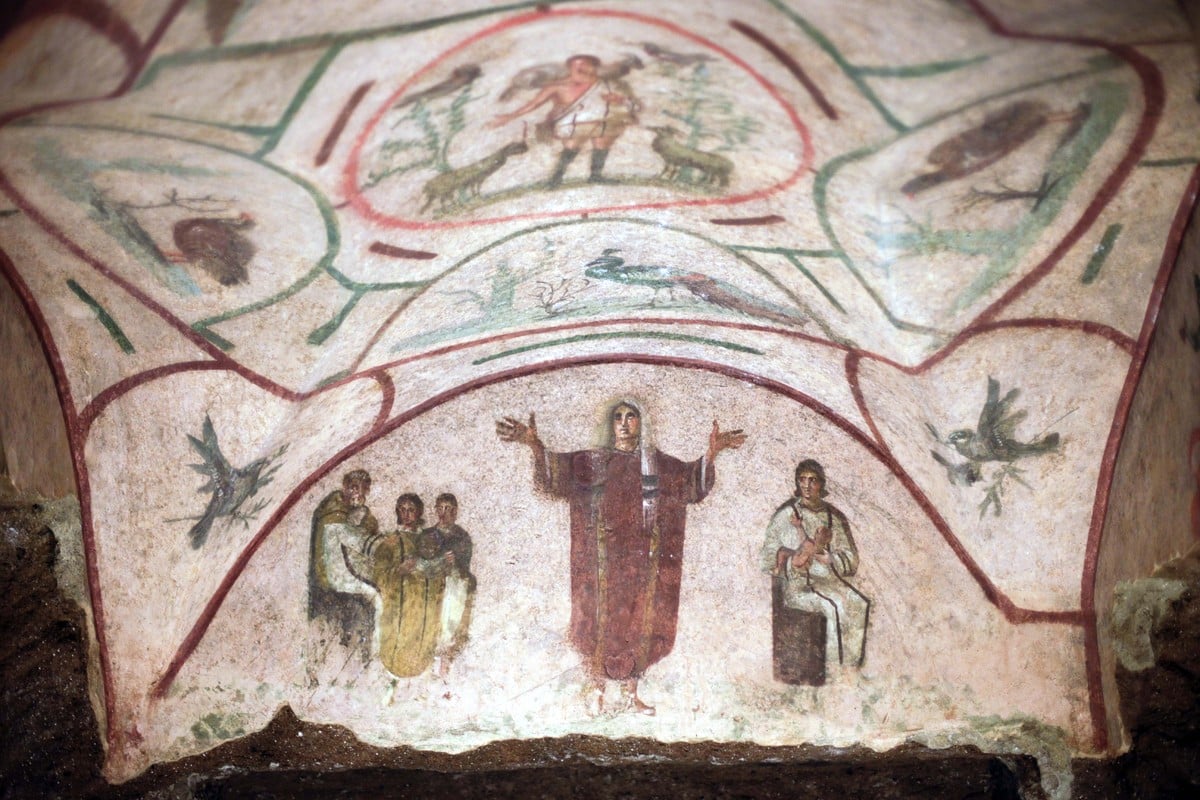
Orant fresco
Fresco over a tomb niche set over an arched wall; cemetery of a family vault.
29
New cards
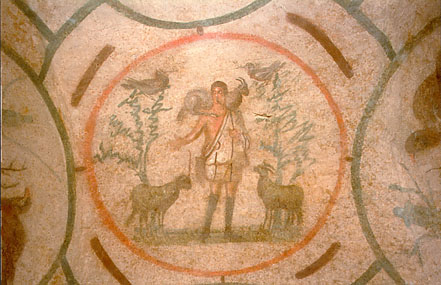
Good Shepherd fresco
Restrained portrait of Christ a pastoral motif in ancient art going back to the Greeks.
30
New cards
Loculi
openings in the walls of catacombs to receive the dead
31
New cards
Cubicula
small underground rooms in catacombs serving as mortuary chapels
32
New cards
Transept
an aisle in a church perpendicular to the nave, where the clergy originally stood
33
New cards
Basilicas
with their large, groin-vaulted interiors and impressive naves, were meeting places for the influential under the watchful gaze of the emperor’s statue.
34
New cards
Transept
an aisle in a church perpendicular to the nave, where the clergy originally stood
35
New cards
Nave
the main aisle of a church
36
New cards
Narthex/vestibule
was positioned as a transitional zone in the front of the church.
37
New cards
Atrium
was constructed in front of the building, framing the façade.
38
New cards
catechumens
Atria also housed the \____, those who expressed a desire to convert to Christianity but had not yet gone through the initiation rites.
39
New cards
Spolia
in art history, the reuse of architectural or sculptural pieces in buildings generally different from their original contexts
40
New cards
Apse
the endpoint of a church where the altar is located
41
New cards
Clerestory
the third, or window, story of a church
42
New cards
Coffer
in architecture, a sunken panel in a ceiling
43
New cards
Ambulatory
a passageway around the apse or altar of a church
44
New cards
Central plan
a church having a circular plan with the altar in the middle
45
New cards
Axial Plan
a church with a long nave whose focus is the apse; so-called because it is designed along an axis
46
New cards
Spolia
tall slender columns taken from the Temple of Juno in Rome, erected on this site; a statement about the triumph of Christianity over paganism.
47
New cards
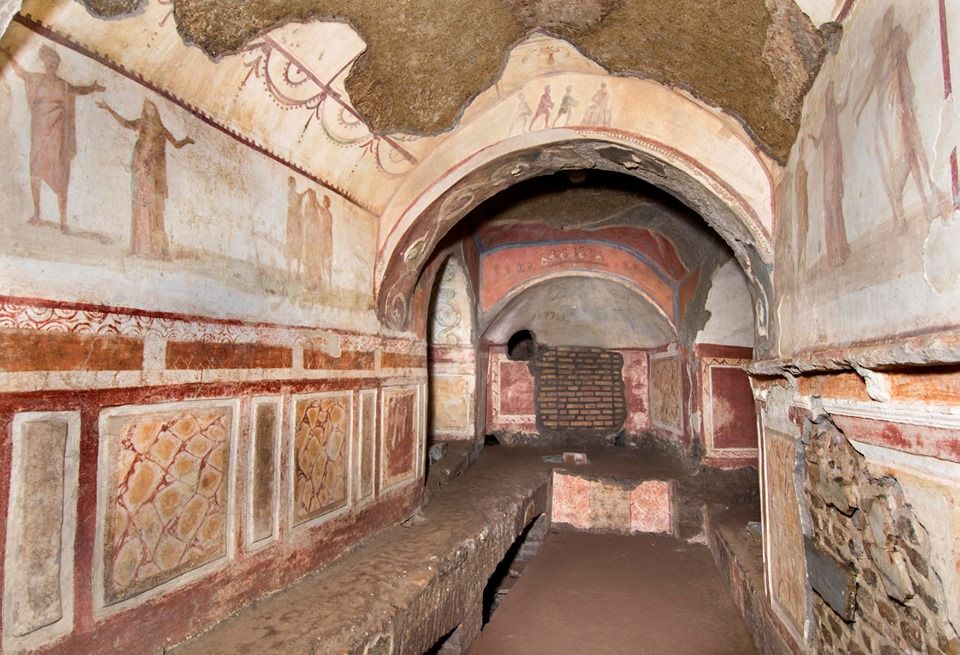
Catacomb of Priscilla
* passageways beneath Rome that extend for about 100 miles and contain the tombs of 4 million dead.
* has some 40,000 burials.
* Called in that name because she was the donor of the land for her family’s burial.
* has some 40,000 burials.
* Called in that name because she was the donor of the land for her family’s burial.
48
New cards
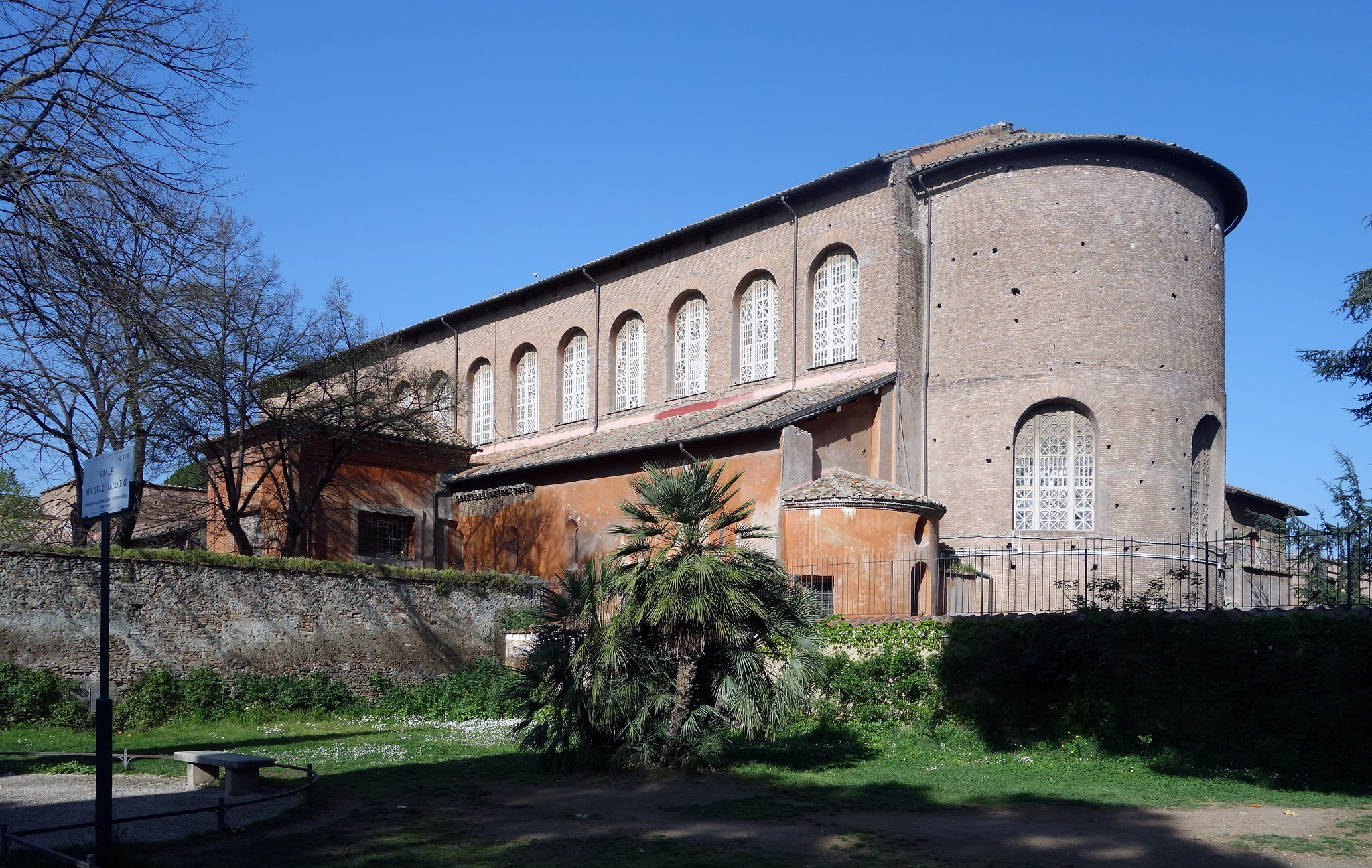
Santa Sabina
* Early Christian parish church.
* As in the Jewish tradition, men and women stood separately; the men stood in the main aisle, the women in the side aisles with a partial view.
* founded by Pope Celestine I (422–432).
* As in the Jewish tradition, men and women stood separately; the men stood in the main aisle, the women in the side aisles with a partial view.
* founded by Pope Celestine I (422–432).
